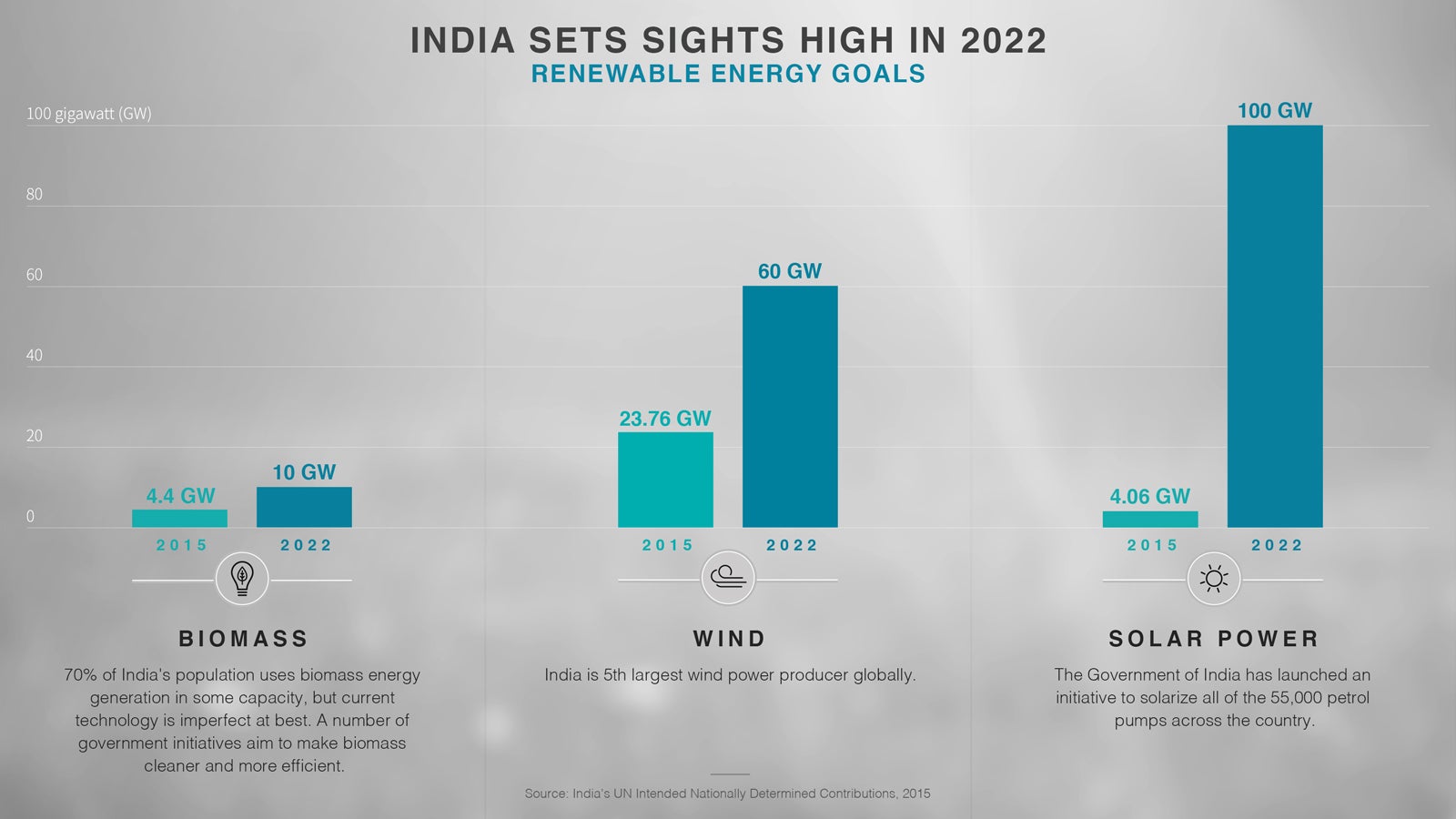India’s looking to quintuple its solar energy output over the next decade
(See the infographic enlarged.)


(See the infographic enlarged.)
This article is part of an ongoing BULLETIN series exploring GE’s innovation, technology, and manufacturing initiatives in India.
India’s economy is rapidly growing, and its renewable energy sector is ramping up to meet the insatiable need for energy that growth demands. Installed capacity in India’s renewable energy market jumped 12.9% in the last year, and the government is encouraging companies to find cleaner energy sources to sustain the breakneck pace of production.
The nation now boasts the world’s third largest capacity for electricity generation, with no signs of production slowing down. India’s government recently approved a huge increase in capacity targets: By 2022, Prime Minister Narendra Modi is targeting a solar capacity at 100 gigawatts (GW), five times more than the previous target of 20GW. The country would need to add more than 95 GW between now and then to hit that goal.
That would boost annual electricity generation averages by 14GW per year, more than the total amount of solar power added in China and the US last year. But solar is only one component of a more robust renewable energy package: India is also aiming for massive increases in wind capacity, hydropower and biomass-based power projects by 2020.
India’s push for clean energy solutions is encouraging for another reason: The country is home to some the world’s most polluted cities. Increased investment in cleaner energy sources could help combat India’s pollution problem by reducing the country’s dependence on fossil fuels as the energy sector grows.
The government’s ambitions are driving both domestic and foreign companies to join the renewable energy bandwagon. Gurgaon-based ReNew Power is placing a $655 million bet on the expansion of wind and solar power projects in rural areas. While ReNew already has 17 operational wind projects in five states, the company says it has a development pipeline of more than 1 GW solar, wind and solar rooftop projects across eight different states—Gujarat, Haryana, Madhya Pradesh, Rajasthan, Maharashtra, Karnataka, Telangana, and Andhra Pradesh.
With a friendly policy environment supporting it, the excitement around the renewable energy sector has been contagious. The EY Renewable Energy Market Attractiveness Index ranks India as the 3rd most attractive market overall. But innovation and investment will be key to determining the sector’s future.
Private players can play a key role in determining what that future will look like. To help India fulfill its ambitions, GE has made major investments in both the power and digital infrastructure that will help make renewable energy production scalable.
But for wind energy to be successful, efficiency is crucial. GE has developed software—the Industrial Internet—that will use sensors and advanced data analytics to manage those turbines. The company is using remote monitoring and diagnostics to allow turbines to communicate with each other and coordinate the adjustment of their pitch as the wind changes. This has helped reduce the cost of electricity generation at wind farms to less than 5 cents per Kwh compared to 30 cents, six times more, ten years ago.
This is a welcome improvement. Not only is growth in the energy sector crucial for India to experience continued rapid economic development, but this kind of clean energy efficiency is critical to ensure the welfare of future generations. As Indian Prime Minister Narendra Modi said, “The more energy we save, the more we can save the next generations. Energy can be saviour of generations.”
This article was produced on behalf of GE by the Quartz marketing team and not by the Quartz editorial staff.